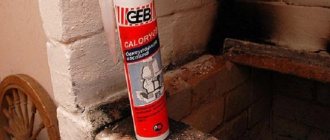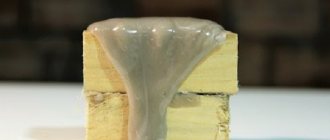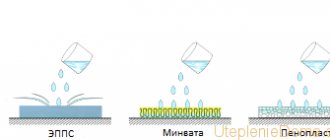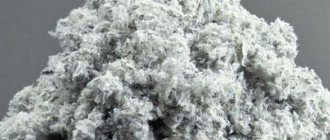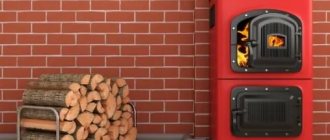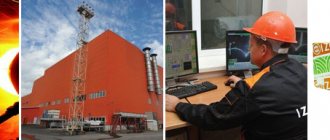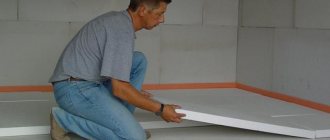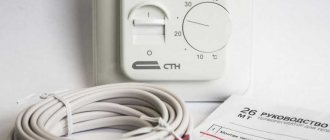Water heater and supply ventilation system
Many words like “mixing device”, “cooler device” and “connection of air heaters” confuse the inexperienced user. He has only heard about the structure of the freon circuit, and he understands quite roughly what the piping units are. To learn more about heat appliance systems, you can “learn” from disassembling such a unit as a water heater.
If we talk about the quantitative option, then a changing heat consumption is inevitable. This is not the best option, of course, which is why today the so-called good regulation principle is used. It ensures linearity of the process, no matter what position the control valve occupies. This principle also implies excellent resistance to possible freezing of the heating device.
A good control principle uses elements such as a centrifugal pump and a three-way rod valve. They allow you to increase the efficiency of the heater and piping. They also guarantee that there can be no leaks on the floor from the steam appliance.
Design Features
Essential elements
- Air intake grille. It has both a decorative purpose and serves as a barrier to dust and other particles contained in wind masses.
- Valve. When ventilation is turned off, the valve blocks the passage for fresh air, creating an insurmountable barrier. In winter, it can block a lot of air flow. You can automate its operation using an electric drive.
- Filters clean wind masses. They need to be changed every six months.
- Water, electric heater, which performs the function of heating the air.
- For small buildings it is advisable to use an electric heater. In large rooms it is better to use a water heater.
Water heater: design features
A water heater for fresh air ventilation is economical compared to its electric counterparts: in order to heat the same volume of air, 3 times less energy is used, and the performance is much higher. Savings are achieved by connecting to a central heating system. Using a thermostat, it is easy to set the required temperature balance.
Automatic control improves efficiency. The supply ventilation control panel with a water heater does not require additional modules and is a mechanism for controlling and diagnosing emergency situations.
The composition of the system is as follows:
- Temperature sensors for street and return water, supply air and degree of filter contamination.
- Dampers (for recirculation and air).
- Heater valve.
- Circulation pump.
- Capillary antifreeze thermostat.
- Fans (exhaust and supply) with control mechanism.
- Exhaust fan control.
- Fire alarm.
Design of a water duct heater type 60-35-2 (size - 60 cm x 35 cm, row - 2) made of galvanized steel, intended for ventilation and air conditioning systems
Water and steam heaters are presented in three varieties:
- Smooth tube: a large number of hollow tubes are located close to each other; heat transfer is small.
- Plate: Finned tubes increase the heat transfer area.
- Bimetallic: pipes and collectors are made of copper, aluminum fins. The most effective model.
Installation and connection features
Installation work, connection, starting the system, setting up work - all this must be carried out by a team of specialists. Installing a heater with your own hands is possible only in private homes, where there is no such high responsibility as in industrial premises. Basic operations include installation of the device and controls, connecting them in the required order, connecting to the coolant supply and removal system, pressure testing, and test run. If all components of the complex demonstrate high-quality operation, then the system is put into permanent operation.
Design and operation of a water heater
A ventilation air heater with a coolant in the form of water allows you to very quickly heat air in large volumes at low costs in comparison with electric analogues.
Equipment savings are achieved due to the fact that water devices are connected to general heating. Therefore, there is no need to specially heat the coolant for the installation to operate.
The design consists of a heat exchanger and a built-in fan. That is, such a device itself does not have its own powerful heater.
Water heated to the required temperature is supplied from the general heating system to a heat exchanger consisting of metal (aluminum, bimetallic) tubes.
The air passing through such a device heats up, and the fan accelerates the flow throughout the room
However, such a device significantly limits the use of installations. Water heating devices for air flows have rather large dimensions, which makes them inconvenient for use in residential areas of apartments. And the connection to the heating system itself is not always possible.
But, water devices for supply ventilation are more cost-effective if used in production, in greenhouses, sales areas and other large premises.
What does the heater wiring diagram look like?
The operating principle can be outlined in general terms. Water, that is, a high-temperature coolant, enters the heater itself, first passing through a settling filter, and then an important three-way valve. To ensure that the water flows at the required pressure, a small circulation pump is used. The water, already cooled, enters the piping, goes to the boiler, and some of its volume also enters the valve.
As for the three-code valve, it necessarily comes with the heater piping and is considered an important control component. It maintains a constant temperature and volume of coolant entering the heating device. When the hot water temperature rises, this valve reduces the water supply while the chilled water supply increases. It turns out that the piping of the heat exchanger, without changing the water pressure in the system, changes its temperature.
Take note:
- The control valve is the main participant in the heater piping; it operates in auto mode and is controlled by an electric drive. The harness includes various sensors; they send signals to the electric drive, due to which the temperature is regulated and maintained at the desired level.
- Design of the piping - there may be standard wiring diagrams that, in principle, are connected to the heater, but they will still have to be adjusted to the device. However, the harness is usually designed for each specific device.
- Options for placing harnesses - this can be either vertical or horizontal. But not every harness can operate in every position. Therefore, the location of the piping is determined when designing the ventilation unit. Otherwise, incorrect operation of the heater piping is guaranteed, or it may even refuse to work at all.
The heater piping can be built according to several schemes. In practice, a standard circuit is more often used, the design of which is simple and the reliability is quite high.
Strapping methods
The piping is a frame made of reinforcement, with the help of which the flow of hot water is regulated. The piping unit helps to monitor the performance of the supply ventilation heater, control it and maintain the desired temperature in the building. The location of the piping units is determined by the installation location, air exchange diagram, and technical parameters of the equipment. There are 2 installation options:
- Recirculated air masses are mixed with supply air.
- Only indoor air is recirculated according to a closed principle.
Taking this into account, there are 2 methods of strapping:
- 2-way valves - with uncontrolled reverse water flow;
- 3-way valves - when controlling water flow in a boiler room or boiler room.
Some produce piping units of various modifications, which are entire sets consisting of valves (balancing and check valves, two and three-way), pumps, bypasses, ball valves, pressure gauges, and cleaning filters.
Scheme of piping heater units for supply ventilation. (Ball valves installed at the inlet and outlet allow you to shut off the water, and a thermomanometer allows you to control temperature and pressure)
If natural ventilation is well established, then there are much more opportunities for successful operation of the equipment. The correct choice of piping in such cases is effective both for heating large areas in production and for private houses and cottages.
The heater used for ventilation is usually connected to the heating system directly at the air intake point. If forced ventilation is in effect, the air heater can be installed anywhere. Air heaters for supply ventilation allow you to create a comfortable temperature regime in both industrial and residential premises. It is only important to correctly decide on the choice of coolant, which will be the most effective (with minimal costs and maximum performance) under certain conditions. An automated system - such as a supply ventilation control panel with a water heater - will make the use of heating devices for supply ventilation convenient and safe.
Rules for operating the heater
For the correct and uninterrupted operation of heaters for supply ventilation systems, it is important to follow the following operating rules:
- It is necessary to maintain a certain air composition in the building. Requirements for air masses in premises for various purposes are listed in GOST No. 2.1.005-88.
- When installing, you must follow the manufacturer's recommendations and adhere to installation technology.
- You cannot supply coolant with a temperature above 190 degrees to the device. For some models this threshold is lower, as stated in the technical documentation.
- The pressure of the liquid medium in the heat exchanger must be within 1.2 MPa.
- If you need to heat the air in a cold room, then it is heated smoothly. The temperature rise within an hour should be 30 degrees.
- To prevent the liquid from freezing in the heat exchanger and breaking the tubes, the surrounding air masses around the device must not be allowed to cool below zero degrees.
- In rooms with high humidity levels, units with a degree of protection of IP66 and higher are installed.
Manufacturers of water heaters do not recommend repairing them yourself. It is better to entrust this work to the service center employees
It is equally important before purchasing to correctly calculate the power of the device so that it provides proper performance and does not run idle
Types of thermal energy consumption systems
There may be several such systems compatible with the heater. Let's look briefly at each.
Ventilation system
It is characterized by the fact that the maximum temperature of the coolant is directly influenced by the technical parameters of the existing equipment. The problem with regards to how to choose the right piping unit is the need to protect the heater from possible freezing. In winter, when the air is supplied at sub-zero temperatures, the temperature of the coolant cannot be reduced or the energy consumption lower than what the system requires.
Radiator heating
In this case, the coolant temperature is strictly limited. For single-pipe structures it is 105 degrees, for two-pipe structures it is 95 degrees. But the temperature of the carrier can decrease indefinitely, until the operation stops altogether, which distinguishes heating from a ventilation system. Here, all elements are in direct contact with the air in the building, and due to the fact that it also has heat-storing characteristics, the building cools quite slowly. In this case, the time period during which a decrease in temperature is possible is established for each individual case.
Underfloor heating
The heat consumption here is the same as in the previous version. The only difference can be considered that the temperature of the coolant (maximum) is limited. In most cases this is no more than 50 degrees.
Thermal curtain
The heater piping for thermal curtains differs significantly from all previous options, so we will consider it in more detail. First of all, this relates to the peculiarities of the operation of the thermal curtain itself: almost all the time the curtain “rests”, waits, but its working time often does not exceed two to three minutes. Moreover, the installation site is always located far from the heating source. In most cases, this is a place under the ceiling, and there, accordingly, hypothermia often occurs, as well as drafts. Below is a diagram with adjustment elements that are suitable for this case.
The system is equipped with special ball joints necessary to disconnect it from the described curtain or from the thermal route. There is also a coarsely cleanable filter that protects the device; an adjustment valve that prevents the entry of solid particles, which, in turn, can extremely negatively affect the performance of the system in general. There are two more valves:
- Regulating-shut-off.
- Regulating, equipped with a special drive.
Each of them is designed to provide maximum fluid flow in operating mode, and minimum flow when “inactive”. In order for the valve drives of such a piping intended for thermal curtains to be provided with proper power, a single-phase voltage of 220 volts should be connected.
Finally, all the elements that make up the heater piping in this case are necessary not only to regulate the temperature in the building, but to protect the device itself from temperature changes and pressure “jumps” that often occur in the heating supply network. If you install mixer blocks, the heating circuit will reach the operating mode that is necessary for the controlled parameters.
Note! Ventilation works more efficiently in this regard, since less energy is consumed
How is the heating of the heater regulated?
In order to control the heating procedure occurring in the device piping unit, you can use one of two possible methods:
- quantitative;
- quality.
If you choose quantitative control of the system’s operation, then you will face an inevitable and constantly “jumping” coolant consumption. Such a method can hardly be called rational, and this is one of the reasons that in recent years people have more often resorted to another principle of control - qualitative. Thanks to it, it became possible to regulate the operation of the heater, but the amount of coolant does not change at all.
In addition, if you regulate the system using the quality principle, then the control is guaranteed to remain linear, regardless of what position the control valve is in.
Important! Quality control has one more advantage - this way the heater will be maximally protected from possible freezing, since water will constantly flow into it. All this became possible only thanks to the fact that a water pump is installed in the heater circuit
There is a flow of water in the circuit, which will not depend on any external influences. In addition, quality control involves the use of a three-stroke rod valve and a specialized pump. All these parts built into the device’s piping have significant advantages that increase the efficiency of the heater and the entire system as a whole:
All this became possible only due to the fact that a water pump is installed in the heater circuit. There is a flow of water in the circuit, which will not depend on any external influences. In addition, quality control involves the use of a three-stroke rod valve and a specialized pump. All these parts built into the device’s piping have significant advantages that increase the efficiency of the heater and the entire system as a whole:
- The regulation valve is located in the place where the coolant enters the heater. If you compare this to a two-stroke device, it controls the entire mixing procedure. If the circuit is in a closed state, then internal circulation occurs; if it is open, then the coolant does not recirculate. If such a design is installed with a rod, this will not only increase the service life of the valve itself (which, as is known, very quickly becomes unusable in products that do not have rods), but will also increase heat transfer.
- The motor of a centrifugal circulation pump is “wet”; in other words, it operates while completely immersed in water. Consequently, the bearings of the device, as well as other elements, are constantly lubricated with water, so there is no need to use any kind of seals. If the heater piping is equipped with such a pump, then leakage is completely eliminated even in cases where the pump is broken or has completely exhausted its service life.
Installation of a water heater for fresh air ventilation
Heating the supply air for ventilation or heating systems allows us to provide the necessary microclimate that meets sanitary requirements. Without this procedure, fresh air will constantly replace warm exhaust air, removing thermal energy outside, thereby reducing the efficiency of the building's heating system. One of the main devices used to prepare supply air for supply to the ventilation system is a heater - an air flow heater that uses the energy of the carrier or converts one type into another.
Operating principle and design of a water heater
A heater is a device used to heat air. According to the principle of operation, it is a heat exchanger that transfers energy from the coolant to the flow of the supply jet. It consists of a frame inside which tubes are located in dense rows, connected in one or more lines. A coolant circulates through them - hot water or steam. The air, passing through the cross-section of the frame, receives thermal energy from the hot tubes, due to which it is transported through the ventilation system already heated, without creating the possibility of condensation forming or cooling the premises.
Types of heating devices for supply ventilation
All heaters for supply ventilation can be divided into two main groups:
- Using coolant.
- Not using coolant.
The first group includes water and steam heaters, the second - electric. The fundamental difference between them is that the devices of the first group only organize the transfer of thermal energy supplied to them in finished form, while the devices of the second group create heat within themselves independently. In addition, water and steam heaters are divided into plate heaters, which have greater efficiency but poorer performance, and spiral-rolled heaters, which are now used almost everywhere.
There are also heating devices, often classified in these groups, for example, a gas heater. The burning gas heats the air flow passing through the glow zone, preparing it for use in ventilation or air heating systems. The use of such devices is not widespread, since the use of gas in industrial workshops is associated with a lot of dangers and has many restrictions.
There are also waste oil heaters. The heat generated by burning waste is used. For large rooms such devices do not have sufficient power, but for small auxiliary areas they are quite suitable.
Pros and cons of using
The advantages include:
- High efficiency.
- Simplicity of the device, reliability.
- Compact, can be placed in small spaces.
- Low maintenance (water and steam appliances practically do not need it).
Disadvantages include:
- The need for coolant or connection to the power supply network.
- Independence of work - equipment for air supply is required.
- Stopping the supply of electricity or coolant means stopping the system.
Both the advantages and disadvantages of the devices are determined by the design and do not depend on external factors.
Types of heaters
There are several types of air heaters used in different areas and conditions.
Let's take a closer look at them:
Mermen
The most common group of devices, characterized by high efficiency, safety and ease of operation. They use hot water as a coolant, coming from the central heating network, hot water supply or from their own boiler. A water heater for fresh air ventilation is the most convenient and economical solution, allowing you to perform the assigned tasks with minimal maintenance or repair costs. The only drawback of the device is the need to connect to the coolant supply system, which creates certain difficulties at the installation stage and prevents quick transfer to another location.
Steam
Steam devices are complete analogues of water devices and in practice differ from them only in the type of coolant. The only difference between steam devices is the greater thickness of the tube walls - 2 mm versus 1.5 for water ones. This is due to the high pressure in the system, requiring reinforced channels for circulation. Otherwise, the devices are identical and have the same operating rules and requirements.
Electrical
An electric heater for supply ventilation does not require a coolant supply, since the heating source is electric current. Connecting such devices is much simpler, which makes them mobile and easy to use, but high energy costs limit the use of this group. Most often, they are installed for local heating when performing one-time work, and are used as emergency or temporary heat sources.
Calculation of heater power
Calculation of the heater is carried out in several stages. The following are determined sequentially:
- Thermal power.
- Determination of the size of the frontal section, selection of the finished device.
- Calculation of media consumption.
Since the air flow is known from the characteristics of the ventilation system, it does not need to be calculated. Formula for determining the thermal power of the device:
Qt = L • Pin • Cin • (tin - tout)
where Qt is the thermal power of the heater.
L — air flow (supply flow amount).
Pv - air density, tabular value, found in SNiP.
Cw is the specific heat capacity of air, available in the SNiP tables.
(tin - tout) - difference between internal and external temperatures.
The internal temperature is the sanitary norm for a given room, the external temperature is determined by the average value of the coldest five-day period of the year for a given region.
We determine the frontal section:
F = (L • P)/ V,
where F is the frontal section.
L - air flow.
P is air density.
V is the mass flow velocity, assumed to be about 3-5 kg/m2•s.
Then we find the coolant flow:
G = (3.6 • Qt)/Cin • (tin - tout),
where G is the coolant flow.
3,6 — correction factor to obtain the required units of measurement.
Qt is the thermal power of the device.
Cw is the specific heat capacity of the medium.
(tin - tout) is the difference in coolant temperatures at the inlet and outlet of the device.
Knowing the media consumption, you can determine the diameter of the piping pipes and select the necessary equipment.
Calculation example
We determine the thermal power at a temperature difference from -25° to +23°, with a fan capacity of 17000 m3/hour:
Qt = L • Pv • Cv • (tin - tout) = 17000 • 1.3 • 1009 • (23-(-25)) = 297319 W = 297.3 kW
Frontal section:
F = (L • P)/ V = (17000 • 1.3) / 4 = 5525 = 0.55 m2.
We determine the coolant flow:
G = (3.6 • Qt)/Cin • (tin - tout) = (3.6 • 297.3)/1009 • (95-50) = 1.58 kg/sec.
Based on the data obtained from the heater table, we select the most suitable model.
Heating surface calculation
The heating surface area determines the efficiency of the device. The larger it is, the higher the heat transfer coefficient, the more the device heats the air flow. Determined by the formula:
Fk = Q / k • (tav.t - tav.v)
where Q is thermal power.
k is the coefficient.
tav.t is the average temperature of the coolant (between the values at the inlet and outlet of the device).
tav.in - average air temperature (external and internal).
The obtained data is compared with the passport characteristics of the selected device. Ideally, the discrepancy between real and calculated values should be 10-20% greater for real ones.
Features of calculating steam heaters
The method for calculating steam heaters is almost identical to that discussed. The only difference is the formula for calculating the coolant:
G=Q/r
where r is the specific heat resulting from steam condensation.
Independent calculation of heater installations is quite complicated and is fraught with the appearance of many errors. If you need to calculate the device, the best solution would be to contact specialists or use an online calculator, of which there are many on the Internet. The solution is quite simple, you just need to insert your own data into the program windows and get the required values, based on which you can select ready-made devices.
Strapping methods
The heater piping is a complex of devices and elements for regulating the supply of coolant to the device. It includes the following elements:
- Pump.
- Two or three way valve.
- Measuring instruments.
- Shut-off valves.
- Filter.
- Bypass.
Depending on the operating conditions, these elements can be located in close proximity to the device, or at a considerable distance from it. Based on the connection conditions, there are:
- Flexible harness. Mounted on control units located next to the device. The installation of such harnesses is considered easier, since it makes it possible to carry out all work on threaded connections, with virtually no need for welding.
- Rigid harness. Used on devices remote from control nodes and requiring strong communications.
Despite the difference in installation techniques, both types perform the same function - they provide setting and adjustment of the heater operating mode.
Adjusting the heating process
There are two ways to adjust the operating mode:
- Quantitative. The adjustment is made by changing the volume of coolant entering the device. With this method, there are sharp temperature changes and instability of the regime, so the second type has recently become more common.
- Qualitative. This method allows you to ensure a constant flow of coolant, which makes the operation of the device more stable and smooth. With a constant flow rate, only the temperature of the medium changes. This is done by mixing some colder return flow into the direct flow, which is regulated by a three-way valve. This system protects the structure from freezing.
Installation and connection features
Installation work, connection, starting the system, setting up work - all this must be carried out by a team of specialists. Installing a heater with your own hands is possible only in private homes, where there is no such high responsibility as in industrial premises. Basic operations include installation of the device and controls, connecting them in the required order, connecting to the coolant supply and removal system, pressure testing, and test run. If all components of the complex demonstrate high-quality operation, then the system is put into permanent operation.
Operating rules and repair possibilities
The basic requirements for the operation and safety of the device are set out in the passport. They are aimed at eliminating emergency situations caused by exceeding the permissible temperature or pressure of the coolant, and avoiding a sharp increase in the temperature of the complex during the first start-up in the cold season. Particular attention should be paid to the risk of freezing of the device tubes in winter, which can lead to failure of the device. To repair devices, specialized organizations should be involved; independent intervention most often only increases the severity of the problem.
Brief overview of current models and prices
Several models can be considered as examples:
- KSK-3 . Spiral-rolled heater with 3 rows of tubes. A common domestic model, tested and reliable. The price of the device depends on its size, ranging from 5,000 to 3,700 rubles.
- Volcano mini. Polish device used to serve relatively small rooms. The cost is in the range of 20,000-30,000 rubles.
- Galletti AREO . Italian device equipped with a fan. It has an attractive appearance and has a low noise level. At the same time, prices for such devices are quite high and range from 80,000 rubles and above.
The use of water heaters allows solving problems with the preparation of supply air and organizing space heating. In addition, the devices are actively used in drying installations. Simplicity, unpretentiousness in operation and high efficiency made these devices leaders among industrial heating installations. Their long service life and the ability to be powered from different sources make them the most attractive devices among all alternative options.
We have selected eight more useful articles for you, see below.
Coolant flow
To calculate the coolant flow rate, you first need to find the frontal cross-section of the device.
It is determined by the formula F = (L x P)/ V, in which:
- F – frontal section of the heat exchanger;
- L – air mass flow;
- P – table value of air density;
- V – air flow speed (3-5 kg/m²s).
After this, you can calculate the coolant flow using the formula G = (3.6 x Qt)/(Cin x (tin - tout)), in which:
- G – water requirement for the heater (kg/h);
- 3.6 – correction factor for converting the unit of measurement from Watt to kJ/h, so that the flow rate is in kg/h;
- Qt – heater power in W, which was found earlier;
- Cw – indicator of the specific thermal capacity of water;
- (tin - tout) is the difference in temperature of the coolant in the return and forward lines.
Water heater calculation
Calculation of the heater power required to heat a particular room is carried out taking into account such data as:
- The volume (mass) of supply air that needs to be heated.
- Initial (external) temperature of air masses.
- The target temperature to which the air must be heated before being supplied to the room.
- Temperature regime of the coolant.
The heater is calculated based on the heating surface area and the required power. Each operation has its own formula. The heater power can be calculated only taking into account real data in specific conditions, among which the most important are:
- connection method (to the central heating network or boiler room);
- strapping method.
Calculation of heater power
Qt – heater heat power, W; L – air flow, m³/hour ρair – air density. The density of dry air at 15 °C at sea level is 1.225 kg/m³; air – specific heat capacity of air equal to 1 kJ/(kg∙K)=0.24 kcal/(kg∙°C); tin – air temperature at the outlet of the heater, °C; tnar – outside air temperature, °C (air temperature of the coldest five-day period with a probability of 0.92 according to SP 131.13330.2012)
Heater power calculator
Coolant consumption per heater
G—water consumption for heating the air heater, kg/h; 3.6 - conversion factor W to kJ/h (to obtain flow rate in kg/h); Qt – heater heat power, W; sv – specific heat capacity of water equal to 4.187 kJ/(kg∙K)=1 kcal/(kg∙°C); tpr – coolant temperature (straight line), °C; trev – coolant temperature (return line), °C.
Coolant flow calculator for heater
Air heating process diagram
You can determine the required heater power using special diagrams. The amount of energy required (Joules) to heat 1 kilogram of air is produced using the i-d diagram of moist air. The calculation is made under the condition that the air heating process occurs at d = const (with constant moisture content). Next, taking into account the calculated air flow rate and the conversion of units (J/s to kW), the heater power is determined.
i–d diagram of humid air
To obtain accurate data, you can use online calculators, with which you can find out the power indicator by indicating performance and temperature. Since the performance of the installation may decrease as a result of gradual wear, it is recommended to include a power reserve of 5 to 15% in the calculation.
Brief overview of modern models
To get an impression of the brands and models of water heaters, let’s look at several devices from different manufacturers.
Heaters KSK-3, produced at the company T.S.T.
Specifications:
- coolant temperature at the inlet (outlet) - +150°C (+70°C);
- inlet air temperature – from -20°С;
- working pressure – 1.2 MPa;
- maximum temperature - +190°C;
- service life – 11 years;
- working resource – 13,200 hours.
External parts are made of carbon steel, heating elements are made of aluminum.
The Volcano mini water fan heater is a compact device from the Polish brand Volcano, characterized by practicality and ergonomic design. The air flow direction is adjusted using controlled blinds.
Specifications:
- power within 3-20 kW;
- maximum productivity 2000 m?/h;
- heat exchanger type – double row;
- protection class – IP 44;
- maximum coolant temperature 120°C;
- maximum working pressure 1.6 MPa;
- internal volume of the heat exchanger is 1.12 l;
- guide blinds.
Galletti AREO heater made in Italy. The models are equipped with a fan, a copper-aluminum heat exchanger and a drainage tray.
Specifications:
- power in heating mode – from 8 kW to 130 kW;
- power in cooling mode – from 3 kW to 40 kW;
- water temperature – + 7°C +95°C;
- air temperature – 10°C + 40°C;
- working pressure – 10 bar;
- number of fan speeds – 2/3;
- electrical safety class IP 55;
- motor protection.
In addition to the devices of the listed brands, on the market of heaters and water air heaters you can find models of the following brands: Teplomash, 2VV, Fraccaro, Yahtec, Tecnoclima, Kroll, Pakole, Innovent, Remko, Zilon.
Methods for tying a heater
The connection of the supply air heater depends on the choice of installation location, technical characteristics of the unit and the air exchange scheme. Among the different installation options, the most often used is mixing recirculation air masses with supply flows. Less commonly used is a closed circuit with air recirculation within the room.
For proper installation of the device, it is important that the natural ventilation system is well established. Connecting the heater to the heating network is usually done at the intake point within the basement
If there is forced ventilation, the unit can be installed in any suitable location.
Also on sale are ready-made strapping units in several designs.
The kit includes the following items:
- ball valves with bypass;
- check valves;
- balancing valve;
- pump equipment;
- two or three way valves;
- filters;
- pressure gauges.
These parts within the assembly can be combined in different ways. Rigid connection of elements or installation using flexible metal hoses is used.
Why is a heater installed in ventilation?
Arrangement of air exchange is one of the mandatory items of engineering support for any building. Depending on the purpose of the room, different types of circulation can be used. However, in our climatic conditions, the question arises: how to ensure access to fresh air with comfortable temperature indicators in the cold season?
To solve this problem, forced heating is used using heating devices mounted in the air ducts. What is a heater in ventilation? This is a device that has a heating element through which it passes, and the flow is heated.
For this purpose, three types of devices with different heating elements are used.
- Mermen.
- Electric.
- Steam.
Each installation has its positive and negative aspects, but the most convenient is an electric heater for fresh air ventilation. It is relatively compact, silent, and has high efficiency. If conditions do not allow for installation of communications, then electric heating is the best option.
According to the design, such a device consists of several heating elements of heating elements with ribs on the surface. Passing through them, the air is heated and supplied to the room.
But, at the same time, a large amount of electricity is spent on heating. The power of such devices can reach several hundred watts, and installations with an indicator of 7 kW or more should preferably be powered from 380 volts.
It would be more economical to install a water device for heating air masses.
Adjusting the heating process
As for the regulation of the heating process, today two types are used: quantitative and qualitative. The first option is when the temperature of the heating elements is regulated by the amount of thermal energy supplied to them. That is, the more, for example, hot water passes through a water heater, the more it heats up. Accordingly, the temperature of the air passing through it becomes higher.
To do this, the heater piping unit of the air handling unit must include a pump, which creates pressure inside the hot water supply system. By increasing the supply, you can increase the temperature of the coolant inside the heating elements. Or, conversely, by reducing the supply, the temperature regime decreases. It should be noted that this method of heating the supply air is not the most rational. Therefore, today, ventilation systems increasingly use a high-quality heating method, that is, hot water is supplied with a constant volume.
A purely constructive distinctive feature of this piping scheme is the presence of a three-way valve, which is installed near the heater before supplying hot water to it. It is the valve that regulates the temperature, and the pump operates in constant mode. The valve got its name due to the fact that it can be placed in certain positions at which different processes occur. In the case of air heating, the valve performs three functional actions.
- It is completely open for the supply of hot water and closed for the coolant discharged from the heater.
- It is open so that part of the cooled coolant can mix with hot water, thereby reducing its temperature, and, accordingly, the heating elements.
- Completely closed, that is, no coolant enters the supply air heating system.
Connection diagrams
Scheme with two ventilation circuits
To effectively heat the incoming air using a heater, it is necessary to make the correct connection. There are several installation schemes, which include:
- One ventilation circuit and one heater. This is the simplest scheme in which one heating device is located at the inlet or any other section of the channel. This connection is used for seasonal heating and does not have a backup heat source.
- Two ventilation circuits and several heaters. This is a more complex scheme, suitable for installation in complexly shaped rooms. Suitable for year-round use. There are several tying knots. The first circuit is used for heating in autumn-winter, and the second for summer. Due to the large number of devices, the system can operate continuously even in the event of an accident at one of the piping units.
Ventilation diagram with heater
The classic harness includes the following elements:
- Circulation pump. It is used in water systems and disperses liquid through pipes.
- Compressor-condensing unit. It is used as an external unit in the cooling system piping.
- Temperature and pressure control devices.
- Locking mechanisms.
- Bypass.
- Filter.
- Two-way or three-way automatic valve.
- Tubes, connectors and other parts to connect the mixing unit for ventilation.
Temperature regulation
Temperature control is the most important task of the system. There are two ways to adjust:
- Quantitative. This is an outdated method in which the temperature directly depends on the volume of coolant.
- Qualitative. A more efficient method in which the coolant is consumed linearly. This is done using a three-way valve and pump. There is no possibility of leakage.
Experts use the second method. It is compatible with any heater connection scheme.
Ventilation system
Trim with two-way valve
The choice of the optimal ventilation scheme is influenced by the required temperature, heating intensity, coolant source, and pressure difference. There are several systems:
- Piping of the ventilation unit using a two-way valve. It is placed at the entry point without an additional heat exchanger. As a result, the valve acts as an intermediate buffer and dampens the pressure of the water flow. The disadvantages of the scheme include the risk of freezing at subzero temperatures. Pump installation required.
- Using a three-way valve. The result is two strapping systems. In the first case, the water flows are separated, and in the second, they are mixed. The scheme is used in autonomous heating networks.
Quality of work: air handling unit heater piping unit
There are 2 methods of installing the device, which are determined by the heat exchange diagram. If we talk about natural ventilation, the heater should be located in the basement near the water intake point. With a forced ventilation system, the device will begin to function correctly only with the correct installation of the heater module piping unit.
These devices allow you to regulate the temperature level of the heat exchanger:
- Bypass;
- Eyeliner;
- Cleaning filter;
- Pump;
- Ball Valves;
- Thermometers and pressure gauges;
- Electric valve.
If we are talking about installing a piping unit with a rigid liner, communications will be carried out using steel pipes. Sometimes flexible connections with corrugated hoses in the system are also used for installations. The location of the node is determined in advance. Tying a knot does not involve any serious expenses.
Heater steam distribution unit
The steam heater must be connected with a special distribution unit, that is, up to the supply point. This node includes:
Figure 2. Components for piping heaters of supply air systems.
- a special cyclone filter with condensate drainage, which also provides protection against contamination;
- pressure gauge to monitor the operation of the system;
- shut-off valves;
- safety valves;
- pressure regulators that provide pilot control;
- check valves;
- pressure reducing valves;
- special condensate discharges into the atmosphere.
The length of each steam supply section cannot be less than 10 steam line diameters. For each outlet, a shut-off valve and a pressure gauge for each section are installed at the steam supply point. The diagram of the strapping unit is shown in Fig. 2.
Supply ventilation with water-heated air
The air is heated to the required temperature by a water heater. It is presented in the form of a radiator with tubes containing coolant. The pipeline has fins that increase the area of contact with the circulated air.
The principle of operation of the system is as follows: the coolant heats the tubes to the desired temperature, they transfer heat to the fins, which in turn heats the air. Thus, heat exchange takes place.
Supply ventilation with water heated air is much more profitable than heating using electricity. On the other hand, there is water inside the water heater, so there is a risk of it freezing with minimal radiator operation.
The power of such a device is adjusted using electrical and plumbing components.
- Area with controller and temperature sensors. Servomotor that controls the valve.
- The mixer is responsible for heating the water in the heating equipment to the required temperature.
The electrical component will control the plumbing unit. It is enough to set the required air heating temperature, and the system will execute this program.
The principle of operation of supply ventilation with a heater
Supply ventilation with a water heater for heating is a complex installation consisting of several main elements.
- Air intake grille.
- Valve.
- Filter.
- Heater
- Additional support devices.
The air intake grille is designed to protect the ventilation ducts from foreign objects and small animals getting into them. It also has a decorative function. The entire main air flow flows through it.
Valves are an obstacle to air flow when the air supply is turned off. This device most often has automatic control that allows you to regulate the flow and prevent cold masses from entering the premises during the winter.
Filters clean the flow from unwanted contaminants in the form of dust. During the operation of the installation, they need to be changed periodically for proper circulation.
The heater heats the supplied flow.
Also, for the full operation of the heated fresh air supply, there are additional parts: a recuperator, a fan, sound absorbers and diffusers.
The heating temperature is controlled by assembling the mixing system and pump. If it is necessary to cool the liquid entering the heater, a cold coolant is added to it, thereby achieving the optimal heating rate.
The recuperator mixes the incoming cold air with the already heated warm air, the fan further supplies it to the room, and the diffuser evenly distributes the flow throughout the room. To ensure that the equipment does not interfere, noise absorbers are used to muffle the sounds of the installation.
What types of air heaters are there?
The device can be installed using one of two methods; in this case, it all depends on the characteristics of the air exchange of the system.
- Recirculated air can be mixed with supply air.
- The air in the system can be recirculated while being completely isolated.
If the ventilation in the room is natural, then the heater should be located in the basement, in the place where the air is taken in. And if the ventilation scheme is forced, then it does not matter where the device will be installed.
Line of standard sizes of Teplokontrol TK units
| Standard size | Section dimensions x 2 External | Section dimensions x 1 External | |||
| TK | Wn | Hi | W | H | |
| 1 | 679 | 812 | 679 | 350 | |
| 2 | 779 | 912 | 779 | 400 | |
| 3 | 879 | 1012 | 879 | 450 | |
| 4 | 979 | 1112 | 979 | 500 | |
| 5 | 1079 | 1212 | 1079 | 550 | |
| 8 | 1355 | 1490 | 1355 | 745 | |
| 10 | 1505 | 1640 | 1505 | 820 | |
| 15 | 1655 | 1790 | 1655 | 895 | |
| 20 | 1905 | 2040 | 1905 | 1020 | |
| 25 | 2105 | 2240 | 2105 | 1120 | |
| 30 | 2305 | 2440 | 2305 | 1220 | |
| 35 | 2505 | 2640 | 2505 | 1320 | |
| 40 | 2705 | 2840 | 2705 | 1420 | |
| 60 | 3105 | 3240 | 3105 | 1620 | |
| 75 | 3505 | 3640 | 3505 | 1820 | |
| 90 | 3805 | 3940 | 3805 | 1970 | |
_________________________________________________________________
We will accurately select a supply, supply and exhaust or exhaust unit to suit your individual parameters and provide you with its characteristics and dimensions.
______________________________________________________________
You can buy a central air conditioner Thermal Control (supply and exhaust and supply ventilation unit, a unit operating on a foundation and suspended units) made in Russia, an analogue of such manufacturers as Korf (Korf), NED (NED), VTS Group (VTS), Remak (Remak) , Rosenberg (Rosenberg), VEZA, Lessar, etc.
| Heat control ventilation and air conditioning units process supply air in rooms with a variety of purposes. These units dehumidify and humidify, heat and cool, and filter outside air. Our ventilation units are applicable both indoors and outdoors. Units installed on roofs are capable of operating under a huge temperature range: from -40°C to +50°C! |
- The functions of energy recovery equipment units are performed by glycol, cross-flow or rotating heat exchangers. Energy recycling allows you to reduce energy costs: heating and cooling air during the use of air conditioning and ventilation systems is carried out with less energy consumption (for example, electricity).
- Heating of air in ventilation units Thermal control is performed by electric heaters, gas heating sections, water copper-aluminum heaters and steam steel water heaters.
- Air cooling is performed by freon and water air coolers.
- The equipment can be supplied disassembled (in separate blocks), which can significantly reduce the cost of transporting the equipment, as well as easily place the installation inside ventilation chambers and technical rooms, without destroying walls and partitions.
It is possible to mount ventilation equipment on the roof of a building, because this allows for high-temperature galvanic coating of the unit casing. The outdoor version of the equipment includes a protective canopy over the inspection panels and an air intake grille that protects the equipment from snow and rain.
Design of ventilation central air conditioners:
- floor-standing horizontal
- floor-standing vertical
- suspended
Automated air heating in supply ventilation
Options for constructing round and rectangular ventilation shafts - the system is automated
- The operation of the equipment is controlled using a control panel (CP). The user presets the mode for regulating the supply air flow and temperature.
- Using a timer, the heated ventilation system automatically turns on and off.
- Equipment that provides heating can be connected to an exhaust fan.
- Heaters are equipped with a thermostat that prevents fire.
- A pressure gauge is installed in the ventilation system to monitor pressure differences.
- A shut-off valve is installed on the supply ventilation pipe; it is designed to block the entry of incoming wind masses.
(no votes yet)
Classification
To create an optimal microclimate in the building, a calorific heating system is used, that is, forced heating using equipment that is installed in air ducts.
Depending on what coolant is used, there are 4 types of heaters:
- Steam - used most often in industrial enterprises where steam production is provided for by technological processes.
- Electric - this option is the easiest to install (you only need a power source to heat the built-in heating elements), but it requires a lot of electricity consumption. The use of an electric heater is considered appropriate only in facilities whose area does not exceed 150 m²
- Water - this type of heater operates on the basis of hot water and is installed in ventilation systems with a rectangular or round cross-section in areas over 150 m². This type of heating is reliable, practical, easy to maintain and inexpensive.
A special feature of the heater is that the composition of the air flow coming from the street should not be sticky, fibrous, or contain solid particles. Permissible dust content is no more than 0.5 mg/m³. Minimum intake air temperature -20 °C.
When choosing a heater, the following factors are taken into account:
- room area;
- weather conditions in a given climate zone;
- ventilation power.
The heater is installed in the inside of the ventilation shaft, so it must correspond to its parameters (configuration and size).
If the performance is low, the device will not be able to warm up the air masses.
If it is not possible to install a heater with the required parameters, then several mechanisms with lower power are mounted in series.
